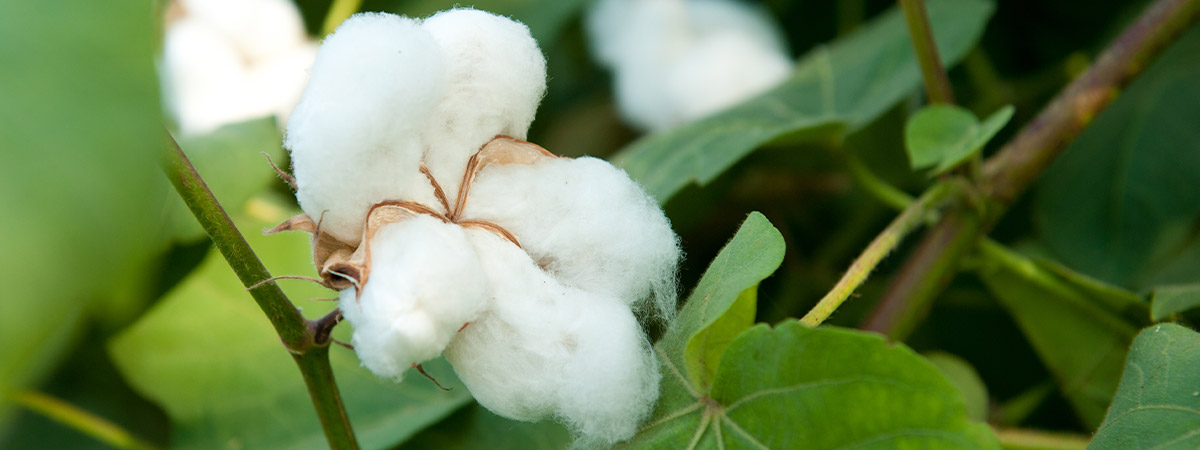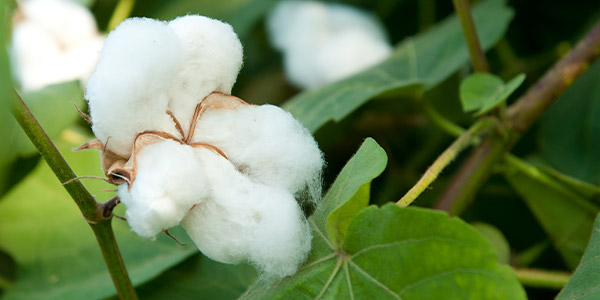On-product Sustainability information
When it comes to designing more sustainable fashion, replacing conventional production methods with more sustainable ones is a must. We are constantly following new developments in fibres and technologies that conserve the earth’s resources. And to help guide our customer, we bring together all of these solutions in on-product sustainability information.
Two of our main focus areas are about reducing the negative impacts of our garments when they are manufactured, and designing products for a more sustainable wardrobe.
One challenge is to source materials that are better for the environment than conventional alternatives. Another challenge is for those materials to meet our strict requirements for design, quality and appeal.
More sustainable production methods are another important side of the coin. With more climate-friendly methods of washing and dyeing, for example, we can conserve and protect natural resources on a huge scale.
Click here to learn more about how we are working to find more sustainable new ways of manufacturing fashion for the future.
Our sustainability information on products
Today 80 per cent of our range is made of certified and/or preferred materials.
All of our products are made with consideration for people as well as the planet. However, our garments made with certified and/or preferred materials have been made with solutions that are more sustainable than conventional production methods, and it is important for us to make our customer aware of these. When it comes to both materials and production processes, we have set our sights high. By 2025 our assortment will be made of entirely certified and/or preferred materials, and by 2030 we will only make use of more sustainable production processes. We have strict requirements that a product must meet to be described as certified and these are based on external certifications and third-party data.
Better Cotton
Kappahl is a proud member of Better Cotton. Better Cotton is sourced via a chain of custody model called mass balance. This means that Better Cotton is not physically traceable to end products, however, Better Cotton Farmers benefit from the demand for Better Cotton in equivalent volumes to those we ‘source'. Kappahl is committed to sourcing 30 percent of our cotton as Better Cotton by 2025.
Better Cotton's mission is to help cotton communities survive and thrive while protecting and restoring the environment. Better Cotton trains farmers to use water efficiently, care for soil health and natural habitats, reduce use of the most harmful chemicals and respect workers' rights and wellbeing.
Learn more about Better Cotton here: https://bettercotton.org/.
Organic Cotton
Organic cotton is grown entirely without chemical pesticides, artificial fertiliser or genetically modified seeds, which results in better soil quality, greater biodiversity and balanced ecosystems. The organic quality of the cotton is assured by independent inspections according to the Global Organic Textile Standard (GOTS) or Organic Content Standard (OCS). Garments that are GOTS-certified bear the GOTS symbol on the garment label.
Sometimes we mix organic cotton with other fibres to create an Organic Cotton Blend. The resulting garment is then composed of a combination of organic cotton and other fibres, but never conventionally farmed cotton.
It is expensive and time consuming to convert agriculture to organic. Therefore, only a small part of all cotton production in the world is organic.
Organic in-conversion cotton
Organic In-Conversion’ cotton is grown on an area of land that is being converted to organic farming. ‘In-Conversion’ describes the process of transitioning from conventional to organic agriculture, and this process usually takes 3 years. During that time, farmers implement organic agricultural methods, builds up soil health and only use fertilizers and pesticides that are allowed in organic farming. Our ’Organic In-Conversion’ cotton is GOTS certified. By buying 'Organic In-Conversion’ cotton, Kappahl supports farmers on their journey to organic agriculture. We are also expanding our portfolio of GOTS certified products.
Recycled Cotton
Recycled cotton is made from used garments or other cotton textiles that are torn up and re-woven to make new fabric. We save a lot of natural resources by using cotton that has already gone through production.
CIRCULOSE®
CIRCULOSE® is a natural material made entirely from textile waste. It is produced by dissolving used cotton fabrics – such as old jeans – and turning the cotton into a new raw material: CIRCULOSE® pulp. The pulp is then spun into fibers to produce new fabrics. CIRCULOSE® can be recycled.
CIRCULOSE® is an innovative product from the Swedish-based company Renewcell. Kappahl has been partnering with Renewcell since 2019.
TENCEL™ Lyocel
TENCEL™ Lyocell are cellulose fibers made of wood which comes from FSC® certified responsible forestry in a closed-loop system, which recycles the process water and solvents up to 99%. Moreover, the fibres are 100% biodegradable. TENCEL™ is a trademark of Lenzing AG.
TENCEL™ Modal
TENCEL™ Modal are cellulose fibers made of wood which comes from FSC® certified responsible forestry in a process with reduced environmental impact. TENCEL™ is a trademark of Lenzing AG.
LENZING™ ECOVERO™
LENZING™ ECOVERO™ branded viscose are a more sustainable alternative to traditional viscose. LENZING™ ECOVERO™ viscose are made of wood which comes from FSC® certified responsible forestry in a process with reduced environmental impact. LENZING™ and ECOVERO™ are trademarks of Lenzing AG.
LIVAECO by BIRLA CELLULOSE™
A viscose quality made of Livaeco fibers, which comes from FSC® certified responsible forestry. The fiber is produced in a closed system, where the water and solvents are reused, causing a reduced impact on the environment.
Recycled Polyester
Recycled polyester is made from PET bottles and scraps and by-products from the manufacturing industry, as opposed to conventional polyester which is made from oil. Making recycled material is less resource-intensive than producing material from scratch, which is why it reduces pollution and energy consumption. It also reduces the volume of waste. Our Recycled Polyester-labelled garments contain at least 50 percent recycled material.
Recycled Polyamide
The raw material source for recycled polyamide can be old fishing nets and carpets, and also waste from the manufacturing industry. Materials that would otherwise be scrapped are used, which saves the planet’s precious resources and contributes to reduced emissions. Our Recycled Polyamide-labelled garments contain at least 50 percent recycled material.
Polylana® – Recycled Fibers
Polylana® is an innovative synthetic fibre made from a mixture of new and recycled polyester. It has the same feel and properties as acrylic, but is a more sustainable option for knitwear. The Polylana® fibres consist of 55% recycled polyester.
Rescued Leftovers
Often, design comes first, and materials second. But with Rescued Leftovers we’re doing the exact opposite. What remnant fabrics might our suppliers have in their storages? How can we design garments to put those remnants to use? The environmental benefit is immense when materials that already exist are put to use, rather than being sent for incineration or ending up in a landfill.
Denim made with less and made for more
All All of our denim is made with certified materials and production processes that use less chemicals, energy and water than conventional jeans production methods.
The materials we use are Better Cotton, organic cotton, recycled cotton and recycled polyester.
The prewash process for our denim products involves far fewer chemicals, about half as much water and almost 30 per cent less energy, as compared with conventional denim production.
Waterborne PU
PU stands for polyurethane and is a coating used on artificial leather and rainwear. This coating does not contain any chemicals that have a proven negative impact on people or the environment.
Responsible Down Standard (RDS)
The Responsible Down Standard describes and certifies animal welfare practices in down and feather production and tracks the certified materials from farm to final product.
Responsible Wool Standard (RWS)
The Responsible Wool Standard (RWS) describes and certifies animal welfare and land management practices in wool production and tracks the certified material from farm to final product.
Responsible Mohair Standard (RMS)
The Responsible Mohair Standard (RMS) describes and certifies animal welfare and land management practices in mohair production and tracks the certified material from farm to final product.
Responsible Alpaca Standard (RAS)
The Responsible Alpaca Standard (RAS) describes and certifies animal welfare and land management practices in alpaca fiber production and tracks the certified material from farm to final product.
Vegetable Tanned Leather
This leather is tanned using plant-based substances such as bark, wood, fruit and leaves, which means that no chromium is used during the tanning process.
FSC
The Forest Stewardship Council® (FSC®) is a global, not-for-profit organization dedicated to the promotion of responsible forest management worldwide. FSC defines standards based on agreed principles for responsible forest stewardship that are supported by environmental, social and economic stakeholders. To learn more, visit www.fsc.org. Look for our FSC® certified products. Licens: FSC®-N003228
The European Flax™
The EUROPEAN FLAX™ is a standard and certification that aims to secure and guarantee the origin and traceability of the flax fiber grown in Western Europe (France, Belgium & The Netherlands). The EUROPEAN FLAX™ fiber is a natural, GMO free fiber grown without irrigation* (*except in exceptional circumstances). Read more about EUROPEAN FLAX™ here
Certified products and collections
We are working continuously to improve our practices and methods in order to increase the proportion of fashion made of certified and/or preferred materials in our stores. But even now, we already have many collections and product categories that are certified. Examples of these are:
- The entire Newbie range is made from certified materials.
- Our entire essentials range – Woman including XLNT, Kids and Man – which is made of organic cotton.
- All of our denim is made with certified materials and production processes that use less chemicals, energy and water than conventional jeans production methods.
- We have transformed much of our swimwear line to now consist of recycled fibres made from items like fishing nets and PET-bottles.

